
Incorporating Literacy Based Therapy in Speech: Guest Post
One Book for Your Entire Caseload- Incorporating Literacy Based Therapy in Speech
A guest post from my friend Kristen at Speech and Joy!
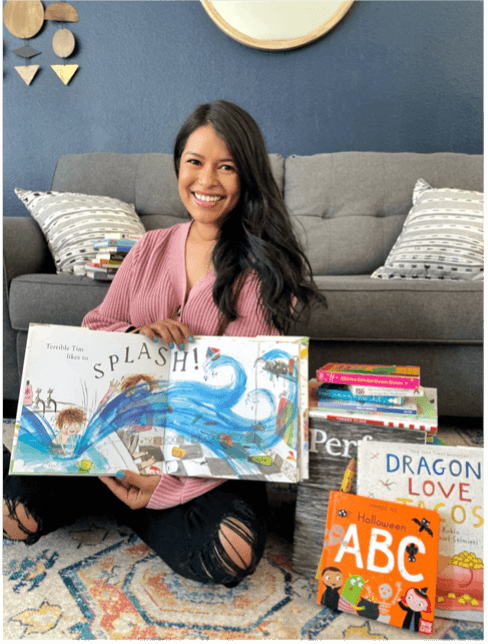
Hi, I’m Kristen, the face behind @SpeechandJoy on Instagram & Teachers Pay Teachers! I’m a school based SLP with a passion for loving my job and clocking out on time every single day. Our job can be overwhelming and it really is difficult to leave work at work. So I want to tell you how I minimize therapy prep, simplify the amount of materials I use, and maximize client progress.... Incorporating Literacy Based Therapy in Speech!
So let's back up... Why use literacy based therapy?

1. It's evidence based.
4. You can target multiple goals with one book.
Literacy based therapy can be broken up into 4 steps.
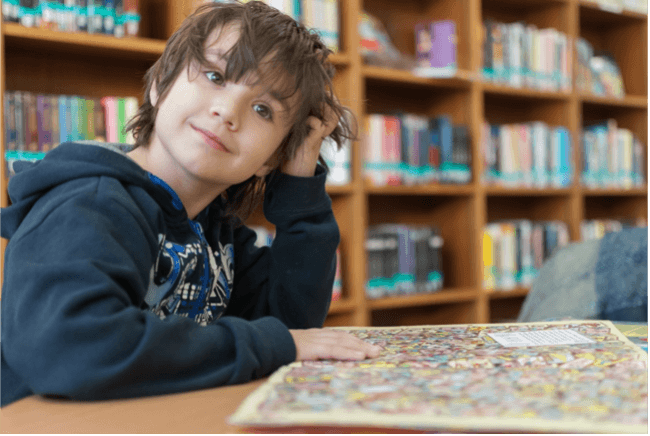
1. Prestory Activation- In this step you are making connections from the student’s life to the text. You are finding out what they already know about the topic and how much time you may need to focus on teaching some concepts before reading the story.
Look at the cover and pictures in the book without reading any of the words. Ask students what the pictures remind them of or if they have ever done something like that before. This is the perfect time to watch videos, or sing songs that are related to the topic.
During this step, model targeted vocabulary words and sentence structures as often as you can. And as always, bring out those visuals! You may have seen graphic organizers such as “Know, Wonder, Learn” pages that are perfect for this step.
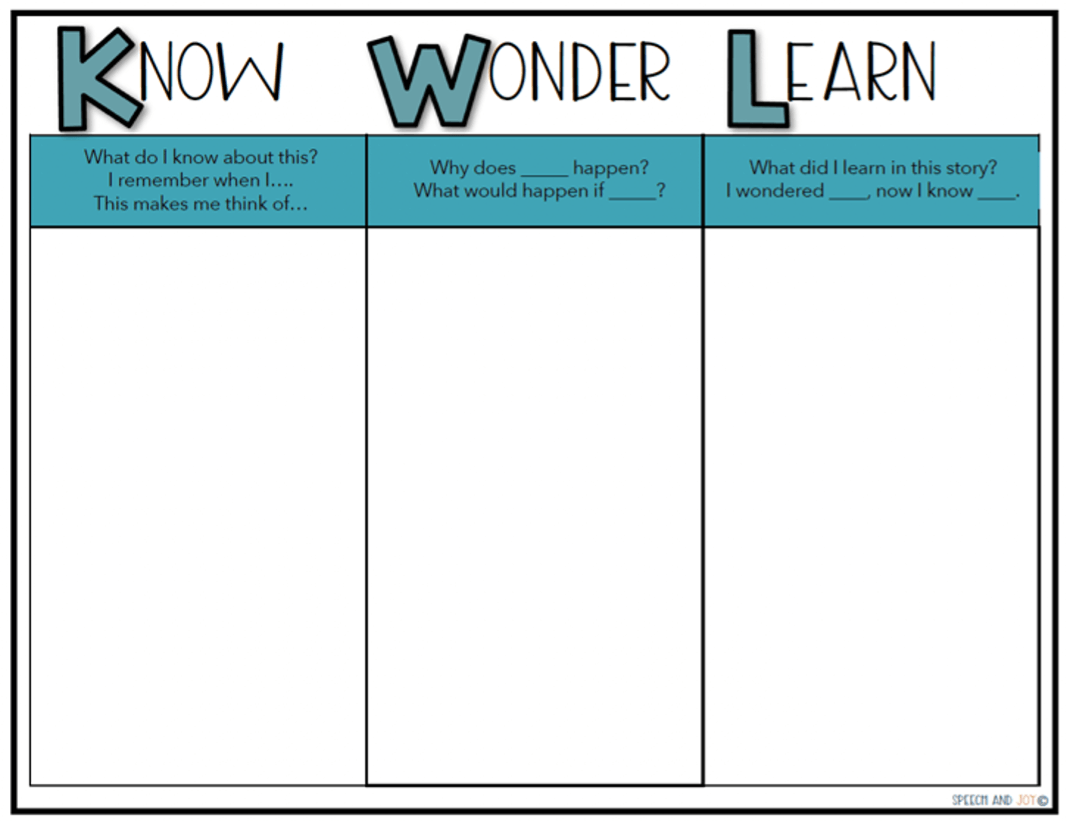
2. Shared Reading: Read the story aloud, highlighting your chosen vocabulary/sentence structure/phoneme. It’s helpful to pick one sentence type to highlight (e.g., sentences with prepositions). Pause frequently to ask literal and inferential questions. Reading the story should be an interactive experience.

3. Post Story Comprehension: Avoid testing the students here, find the answers to questions together, help them absorb what they read. Identify story elements (e.g., characters, problem) to help organize thoughts.
4. Focused Skill Activities: Finally, it is time to really focus on those goals with the activities we all know and love. Here are some examples:
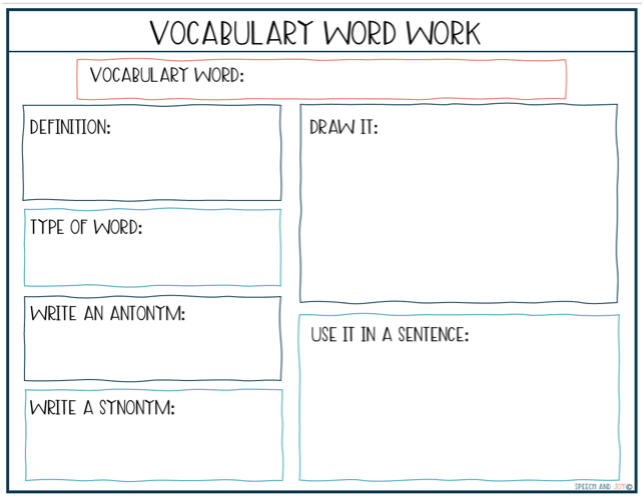
a. Semantics: Write and draw the meaning of a previously unknown word, use it in a sentence, discover if it is a noun/verb/adjective and find it’s antonym/synonym.
b. Syntax: Find a picture in the story and ask students to tell you where the object is (e.g., under the bed, next to the boy).
c. Pragmatics: Create a parallel story from a different perspective.
d. Narrative skills: Put parts of a story in order. Use a graphic organizer such as a “Somebody Wanted But So Then” page to retell the story.
e. Articulation: Students find words with their targeted sound, makes a list and creates a sentence.
f. Fluency: Identify if you are using “bumpy” or “smooth” speech.
Tips before starting!
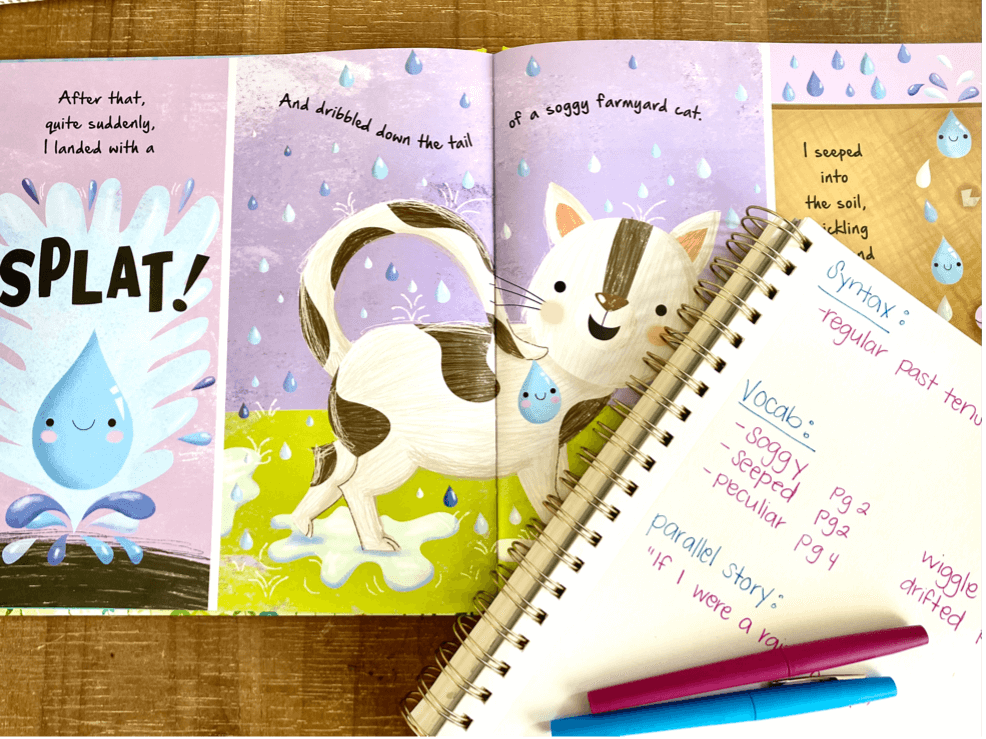
· Look for a story that can be read in about 10 minutes or less.
· Find a book with unknown vocabulary, and different sentence structures to target multiple groups.
o Write down some vocabulary you want the student to understand.
o Focus on one to two syntactic concepts per student/group.
· Create a separate list of vocab/syntax/social skills for your younger students and older students so you can use the book for everyone.
· If it’s too difficult for your younger students, don’t be afraid to simplify the story.
· Once you have your basic visuals, use them for every single book. Consistency helps take the guess work out of it for your students.
· Don’t rush it! One book typically makes me about 3-4 weeks to complete.

I would love to answer any additional questions you have over on my Instagram @SpeechandJoy!
Grab my “Story Grammar Visual Freebies" to help get you started!
